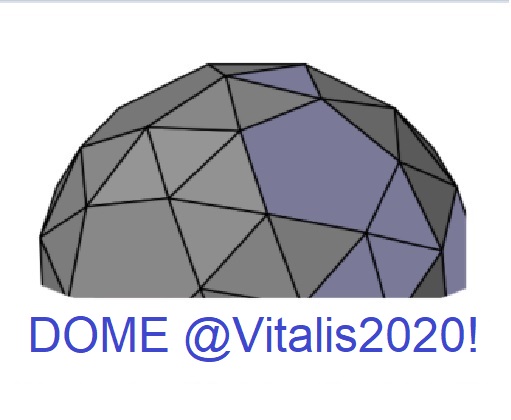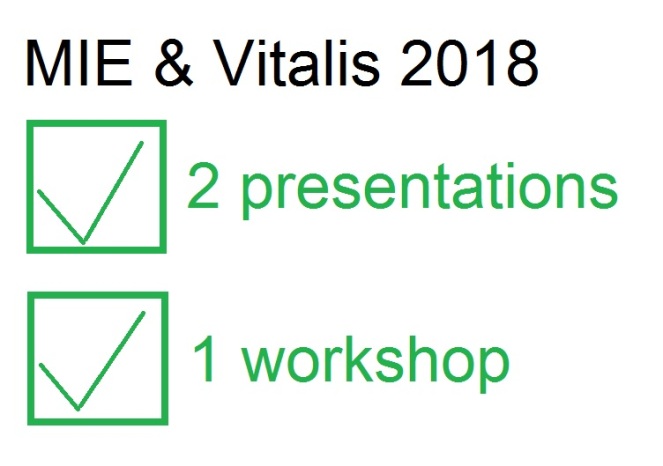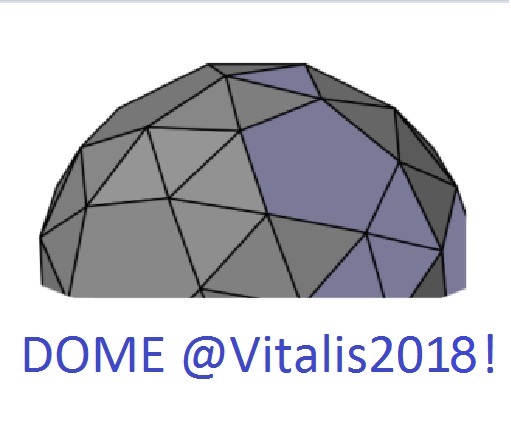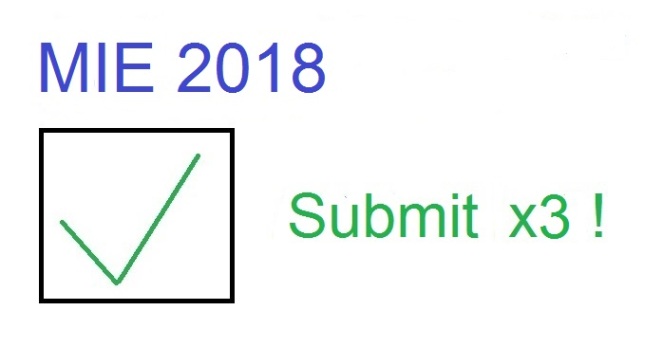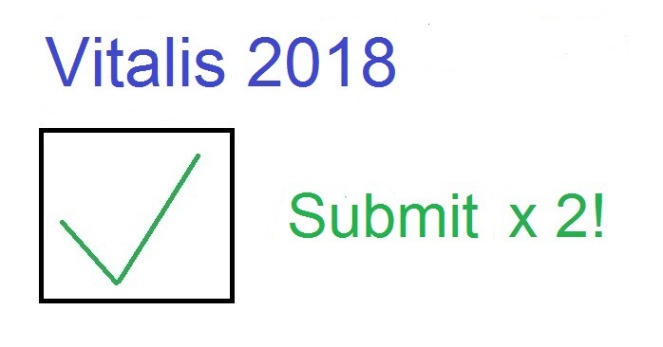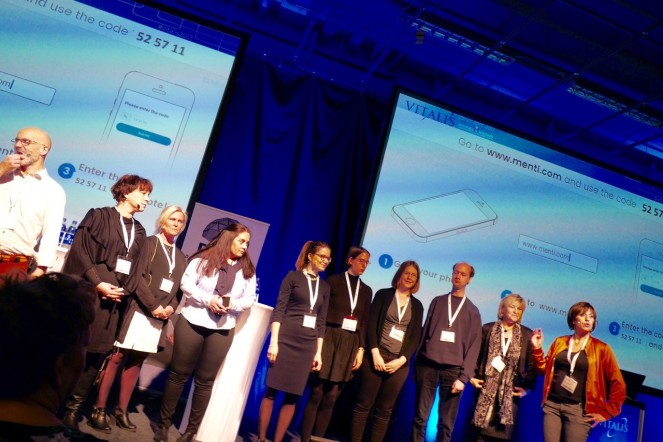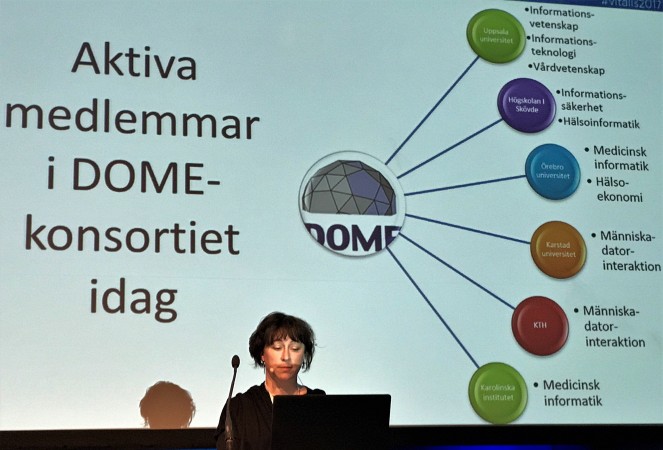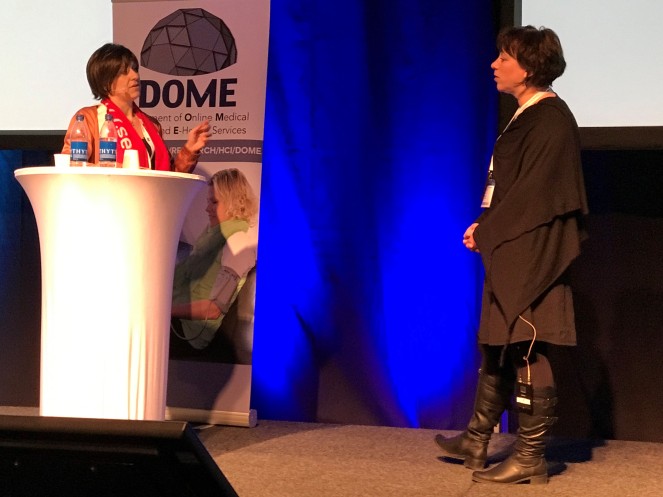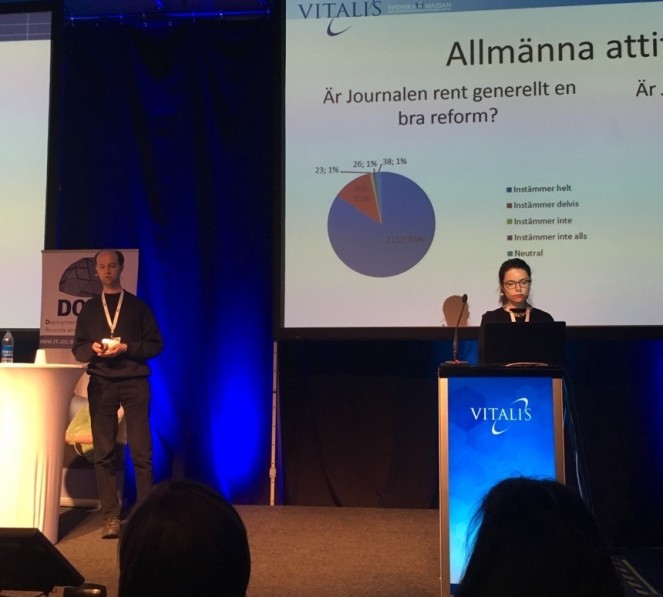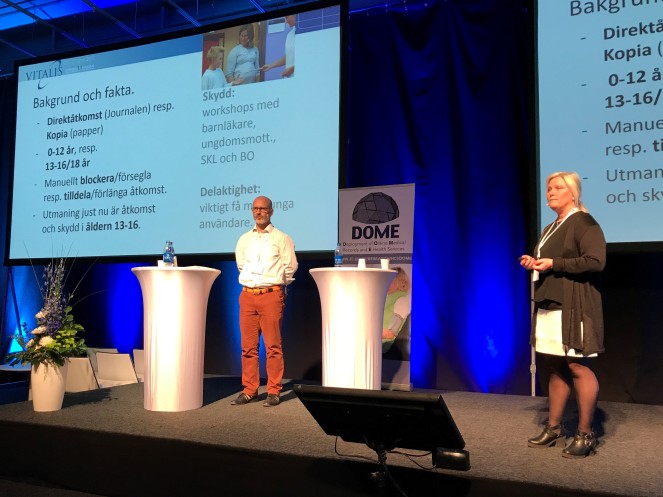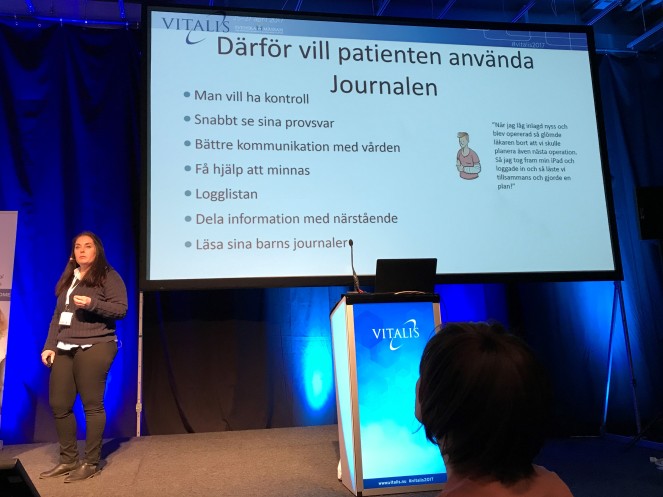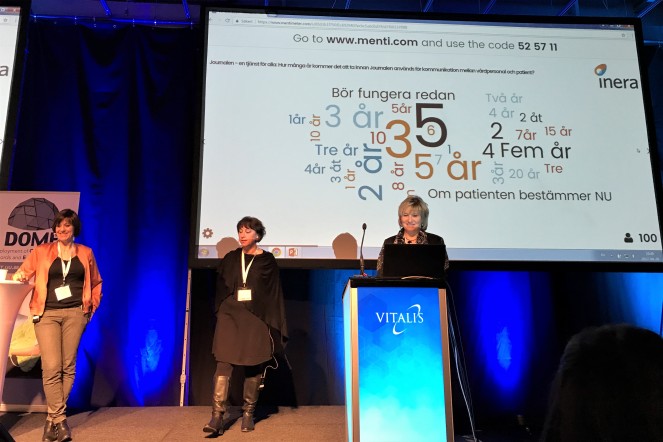Recently participated in digital Vitalis 2020!

Tuesday and Wednesday this week I participated in this year’s Vitalis conference which was held in digital form because of the situation with Covid-19. Vitalis is the largest eHealth event in Sweden. I have never participated in a large digital event before, so it was really an interesting experience. Usually, the event is held in Gothenburg during three days in May every year and I have participated in the regular, on site, events two times. In this blog post I summarize one of the presentations I was a part of during an earlier year at Vitalis. This year it was unfortunately not possible for me to participate as a presenter due to technical difficulties, but it was still rewarding to participate.
This time around, most of the content was pre-recorded by the respective presenters, but the scheduling in parallel sessions throughout the days was similar to before. During the conference the pre-recorded sessions were run only when they were scheduled in the program, but soon all the recordings will be made accessible on the conference homepage and can be viewed until the end of the year. Around 240 presentations in total were pre-recorded. This was a really interesting setup for a digital conference – the original parallel sessions held in different “rooms” were kept during the conference days, but afterwards you can go back again and listen to particular passages that really sparked your interest or listen to sessions you could not participate in during the two conference days. Could this be a setup also for conferences held on site? Towards the end of the conference the business manager of Vitalis hinted that recordings of presentations might be used in future versions of the conference as well. An interesting comment related to this that came up during an interview was that this kind of setup enable a continued discussion about the specific presentations that would not be possible when only watching a presentation on site. Of course, there is usually some room for questions from the audience after every conference presentation, but now when all the material is available online there is more time for other interested participants (also for those who missed the session that you were in) to engage with your material and comment on it.
And when it comes to overall communication another interesting feature was a chat function which could be used to engage real time with the current presenter about the presented material. A prerequisite for this to work was of course that the presenter was in the chat room during the scheduled time. Even though this is not the same as discussing verbally and meeting in person, it still enabled a valuable opportunity for real time communication. There was also a chat available outside of the virtual presentation rooms enabling ongoing discussions about the conference and the large digital exhibition.
Aside from the pre-recorded presentations just mentioned, there were also two live channels running in parallel. Those channels showed the introductory keynotes and four panel discussions each day. Between the panels there were also follow-up discussion in a special TV studio. This TV studio was a really nice feature that in a way stitched everything together by taking a broader perspective on the themes brought up during the conference and especially the panels. There have not been any follow-up discussions during earlier Vitalis events. Johan Wester, who is a Swedish comedian, actor and moderator, led the studio activities in a very good and entertaining way. There were obviously a lot of material to choose from, so I’m very happy about the fact that I now have access to all the presented material for a few months ahead. I chose to follow the live channels and will consequently go back and listen to pre-recorded presentations later on. Among other things, I listened to interesting panel discussions about how the Covid-19 pandemic has speeded up, and by other means affected, the development and uptake of eHealth solutions, how digitalization can support and also renew social care and how current laws and regulations are actually hindering the implementation of new eHealth solutions. One aspect in particular that I liked with the panels I listened to was that all of them included at least one patient representative! It is really important to include the patient’s perspective in eHealth conferences and Vitalis really managed to do that in a good way both in the panels and the TV studio. I will come back to this and some of the sessions in later blog posts.
Since all material from Vitalis is online and accessible for the remainder of this year, it is actually still possible to register for the conference. You can get access to everything by buying a ticket here. If you are interested in state-of-the-art when it comes to eHealth in Sweden I would really recommend buying a ticket.
